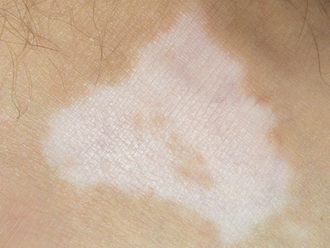
The boat capsized in rough seas in March close to Italian territorial waters. A search and rescue operation fished bodies from the sea, dead and alive. Many of the ship’s passengers remained unaccounted for. No one knew quite how many.
It’s a grimly familiar tale that sounds like one of the tragedies that occurred on Europe’s southern rim over the past couple of years. But in fact, the events described occurred in 1997. Some details of these depressing disasters have changed over the years - then, the victims were Albanians, and it was the Adriatic, not the Mediterranean, that was the death trap.
But the similarities throw up a deeply uncomfortable truth: people have been dying while trying to get into Europe for more than 20 years.
These stories, and thousands of others, have been collated by the Dutch NGO United for Intercultural Action over the years, in a document — the List.
Faced with a lack of official data, the activist group has gathered newspaper articles, NGO records and coastguard reports to collect details of the deaths of migrants travelling to Europe since the early 1990s. The List is revealing: deaths do not just occur at sea, but in detention blocks, asylum units, factories and town centres. Some 400 have taken their own lives; more than 600 have died violently at the hands of others.
Because the data is not comprehensive, as we don’t have records of every incident, the true death toll is certain to be much higher.
“We have no way of knowing the actual number of deaths, but this does show there has been a gradual and very steady increase,” says Thomas Spijkerboer, professor of Migration Law at Vrije Universiteit Amsterdam. “The major significance of the List is in its signals. It shows that this has been ongoing for 25 years and the people who pretend to be shocked now should have been shocked a long time ago.”
The vast majority of migrants who have died trying to reach Europe have drowned. Volunteers have logged more than 27,000 deaths by drowning since 1993, often hundreds at a time when large ships capsize. These account for nearly 80% of all the entries.
The list points up the marked increase in drownings that occurred after 2014, when the conflict in Syria accelerated, adding to numbers from south Asia and sub-Saharan Africa. In 2013, it reports more than 900 deaths by drowning. By 2017 that number had increased to around 3,500.
A wave of public sympathy for the plight of refugees in Europe was quickly displaced by a backlash against the rising number of arrivals in 2015 and 2016, when almost three million people claimed asylum in Europe.
The EU responded by trying to export the problem back to Africa, with a EUR2bn (GBP1.75bn) EU-Africa trust fund designed to encourage African countries to stop people making the journey to Europe. The figures show the impact of this policy shift: in 2014, there were around 1,700 deaths recorded in and off the coast of Africa ascribed to migrants trying to get to Europe; by 2017 this had almost doubled, while deaths in Europe halved over the same period.
“Some would say there are fewer deaths in Europe, and the EU’s policy is working”, says Ann Singleton, an academic specialising in migration data at the University of Bristol. “But there’s so much that’s unknown. Deaths are less likely to be reported if they occur in remote areas of Africa, and the number of people are dying inland, or in Libyan detention camps, isn’t recorded.
“If you look at maps, it looks as though the Mediterranean is the most dangerous area of the world for migrant journeys. But we can never say if that’s true, because we simply don’t know what’s happening elsewhere,” says Singleton.
For those who get to Europe, the danger is not over. The List records more than 500 deaths in the asylum process, detention centres, prisons and camps. Among this group, the most common cause of death is suicide.
Some, such as Oumar Dansokho, killed themselves after failing to secure status in Europe. The 25-year-old from Guinea first began the process of claiming asylum in 2008, according to Belgian reports . He was finally denied in 2015, and set himself alight in the offices of the Belgian Asylum Agency.
The UK is the only state in Europe that detains irregular migrants indefinitely, and there are more than 50 deaths recorded that occurred in British detention centres, prisons or privately run housing for asylum seekers. One is Manuel Bravo, who hanged himself in Yarl’s Wood detention centre, Bedfordshire, in 2005, the day before he and his son were due to be deported to Angola. He knew immigration officers could not deport his 13-year-old son, Antonio, without a parent.
A note found in Mr Bravo’s room said: “I kill myself because I don’t have a life to live any more. I want my son Antonio to stay in the UK to continue his studies.” He died on his 35th birthday.
Unlike other data sources tracking migrant deaths, the list also records those who died after they were deported from Europe. The three most recent entries are three Afghan men, Farhad, Aref Hassanzade, and an unnamed 16-year-old, all reportedly killed by the Taliban. Farhad and Aref are among the 700 people in the database who were violently killed. More than a hundred died after contact with European police, border guards or soldiers.
Compilers acknowledge that their data is incomplete. Bodies lie undocumented at the bottom of the Mediterranean; no one knows how many migrants have disappeared in the Sahara, which may even be as deadly as the sea for those who cross it. Tracking returnees is almost impossible, particularly if there is no will to do so.
Some trials suggest big data could improve monitoring of deaths. A team of researchers at the UN Global Pulse project suggest predictive models , using historical maritime data to predict where future disasters might take place, could make search and rescue teams more effective.
But this solution assumes there is the will to stop ships sinking in the first place. Singleton is sceptical about the promise of big data, and says we could better improve information by investing resources in more traditional methods.
“There are very good examples in Italy and Greece of projects using forensic data to identify bodies, collect data and trace the deceased’s family,” she said.
“But forensic analysis is very expensive and time-consuming. It’s understandable that the priority among NGOs working with migrants is people who are alive, and identifying bodies may become a secondary consideration.”
Singleton says the EU and its member states should do more to monitor deaths, rather than leaving the bulk of the work to NGOs and activists. “Where deaths are happening, we need the best possible coverage in order to hold authorities accountable.”
Better reporting around migrant deaths is an important first step - but Singleton is clear that it’s not a solution. “Ultimately, we don’t want an industry collecting data, we want safe migration routes.”
“In an ideal world, in a humane world, there’d be no data to collect at all.”
Methodology
Volunteers and staff at UIA update the data annually, spending six months at a time verifying reports, categorising deaths and entering them into the database. They began collecting data in 1992, and the entries stretch back to 1989, but the first year with a significant number of records and the published list begins in 1993.
When the project began, they received physical clippings from a network of groups around Europe. Now, the data is collected from email submissions and Google Alerts in a number of languages.
“We thought that if someone read a story about one person’s death in a newspaper article, it wouldn’t seem like a big deal,” says Geert Ates, a founding member of the organisation. “But maybe if we collected them all together, we could make people care.
“It was initially very difficult. In that first stage of the project, we kept pulling together clippings until we had a thousand names. We tried to go to the media, but there was little interest. Until 2010, it felt like we were working on this alone.”
Ates points out the way the data is collected means it is necessarily incomplete. It relies heavily on media reports, and journalistic interest will be skewed towards a certain type of tragedy.
The artist Banu Cennetolu has been collaborating with UIA since 2002, working with the update that the Guardian has published.
The total number of deaths should be treated with caution. There are thousands of deaths we don’t know about, and in a small number of cases there may be some double-counting in the List, where one incident is reported by multiple sources.
It’s a useful starting point to begin looking at major trends, but it’s nowhere near an authoritative account.
–Guardian News & Media Ltd













